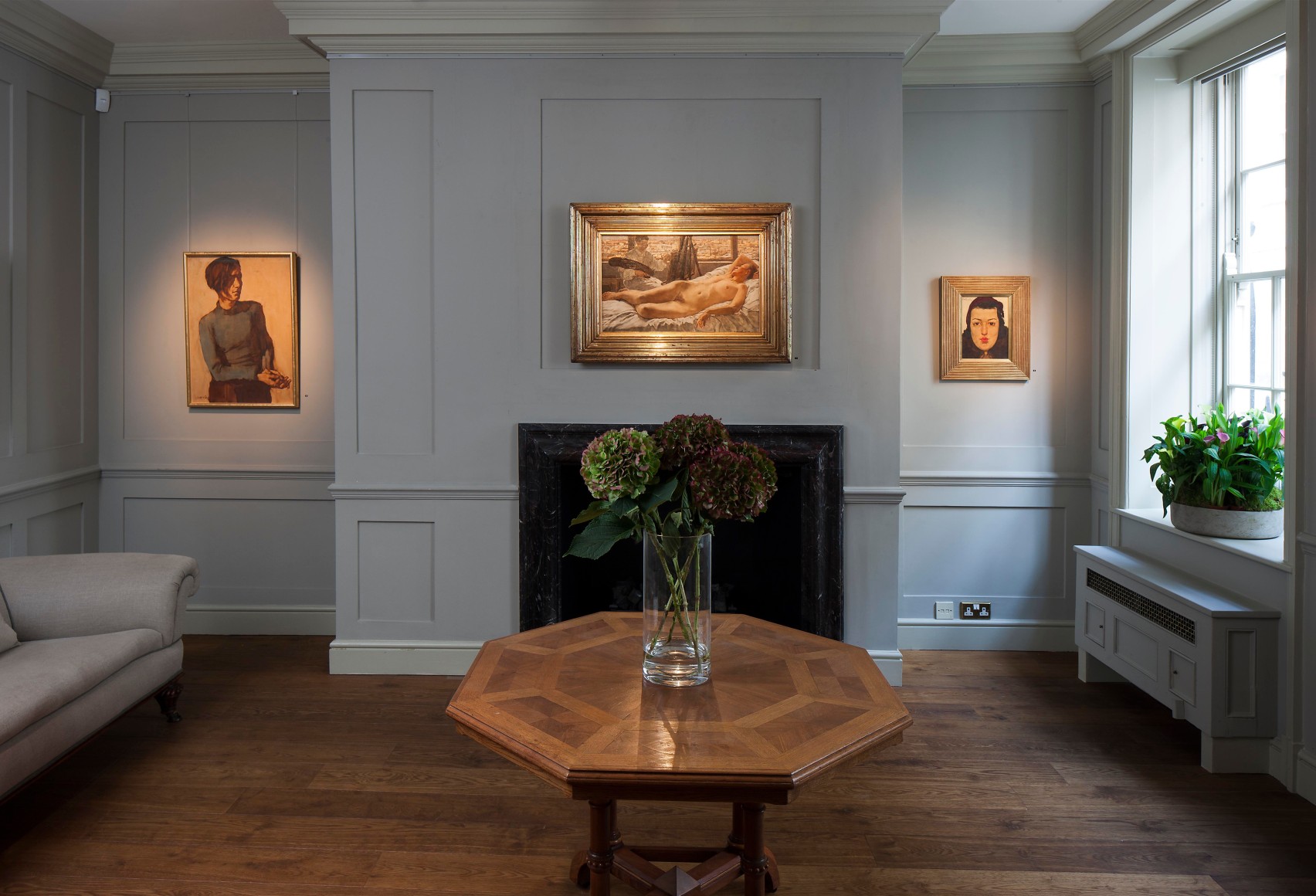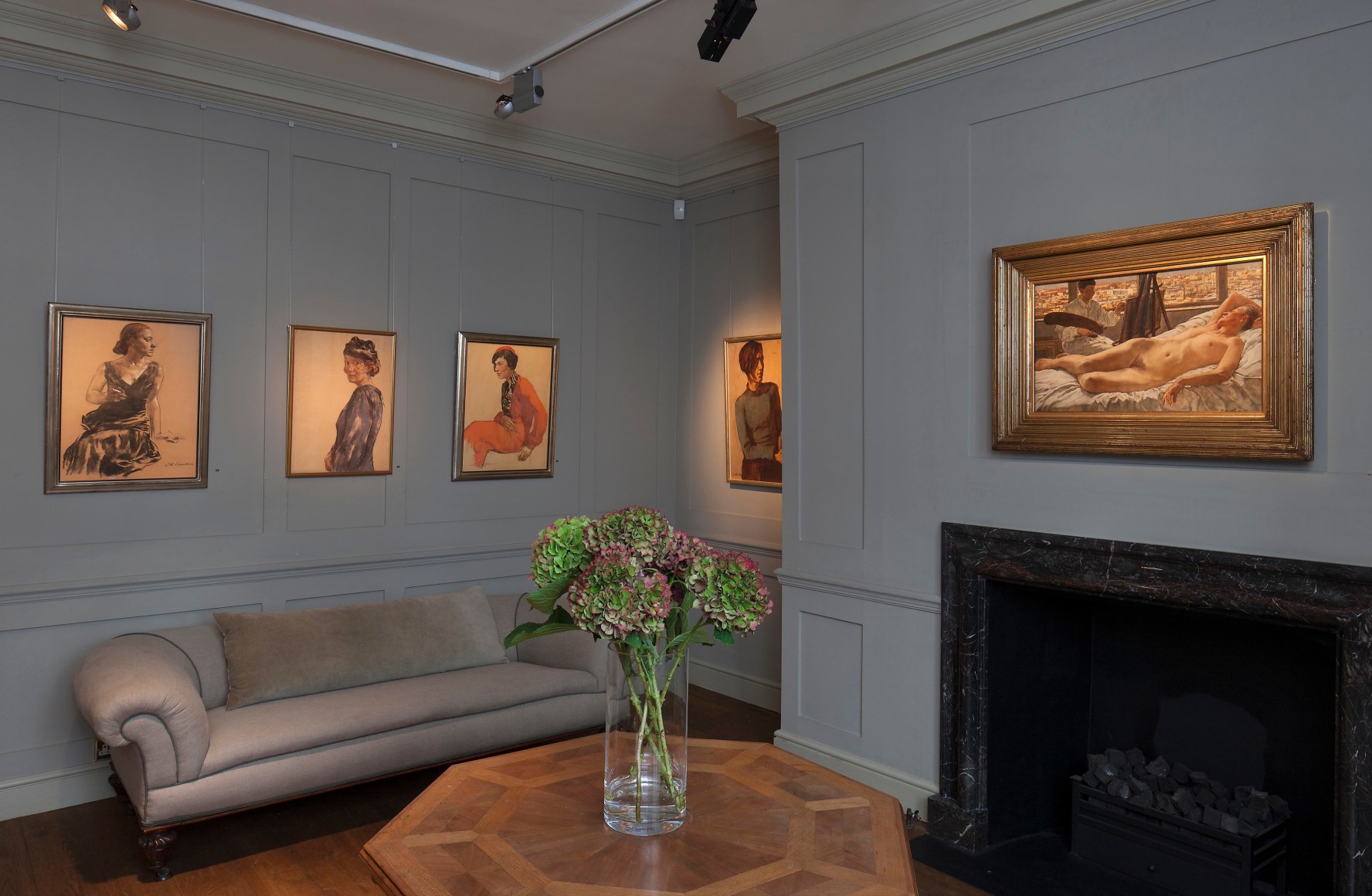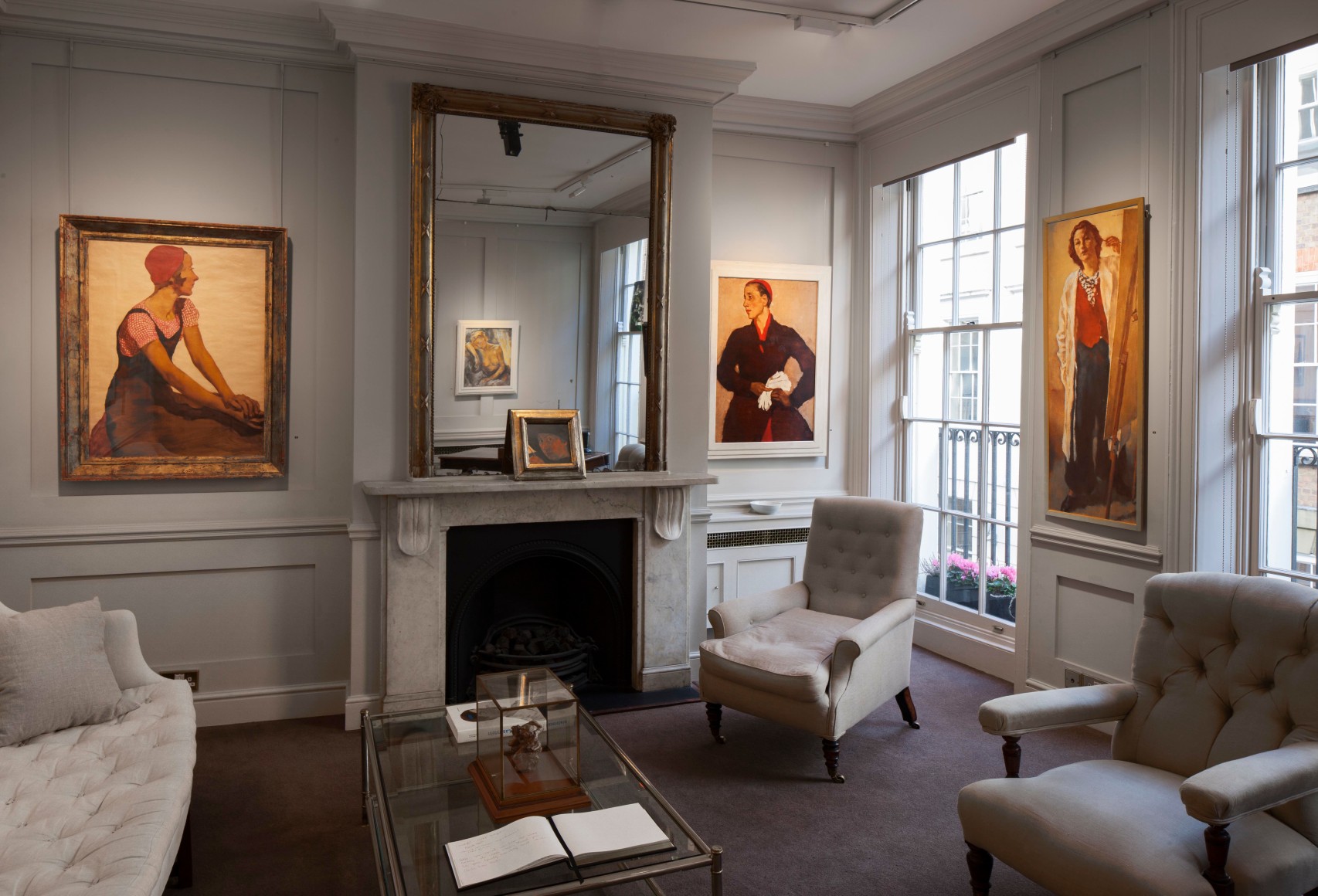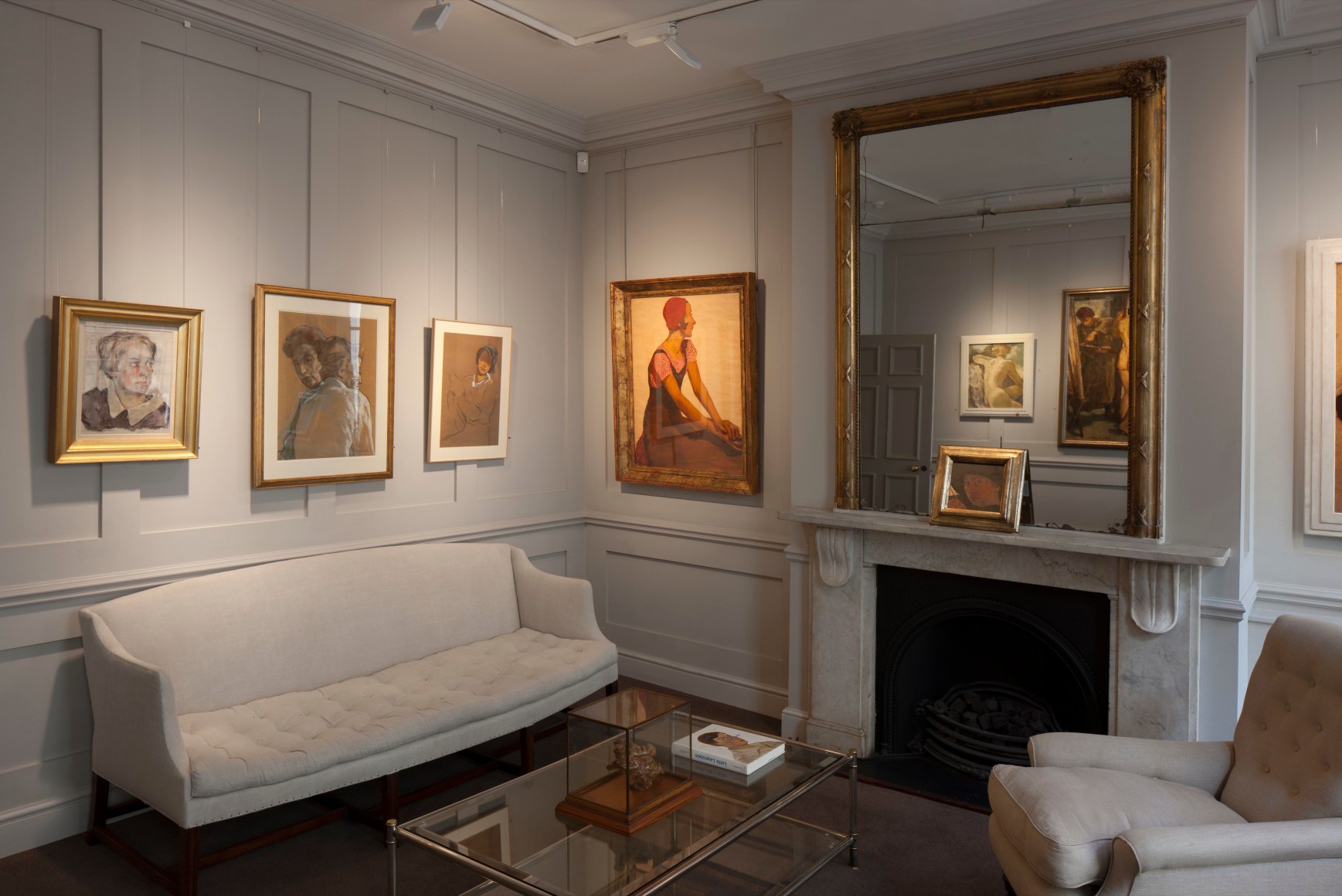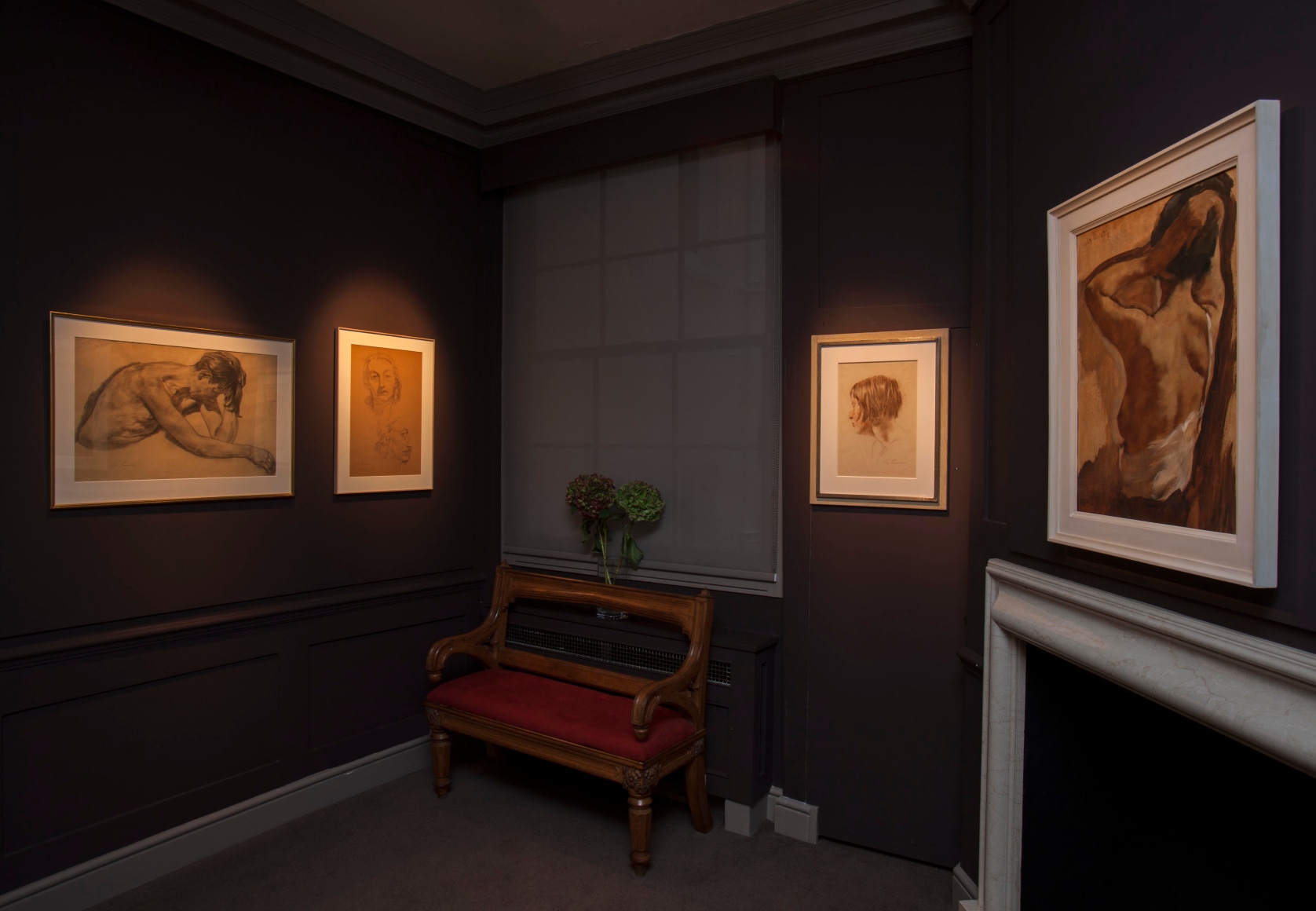27 years after Agnews staged the artist’s last exhibition before her death, the gallery is delighted to announce Lotte Laserstein’s Women an exhibition devoted to Lotte Laserstein’s intimate and nuanced depictions of women. This will be the first exhibition in London dedicated solely to Laserstein since the ground-breaking 1987 exhibition at Agnews, where the artist herself was present and a lively collaborator. A focus of the exhibition is to acknowledge and reinstate Laserstein as one of the great women artists in the canon of 20th century art from which she and many other women artists of the inter-war period have been excluded.
The exhibition is comprised both of works for sale and on loan; some of the works have rarely been seen in public and others have not previously been exhibited. Many of the loaned works are from private collections except for one, her Self-portrait at the easel (1938), which has been loaned by the Stiftung Stadtmuseum Berlin.
Laserstein (1898 – 1993) embarked upon a bright career in the Berlin of the twenties and thirties, one of the first women to complete her studies at the Academy of Art in Berlin, before she was compelled to leave the country in 1937 having been declared
“three-quarter Jew” and excluded from public activity as an artist. With that she also vanished from Germany’s collective consciousness. Those works in public collections which might have recalled her existence and her creativity fell prey to the Nazi iconoclasm; and art historians anxious to rehabilitate disgraced artists in post-war decades were too preoccupied by the Abstract to take note of a Realist’s impressive oeuvre.
With her living and working conditions increasingly tenuous, Laserstein emigrated to Sweden in 1937 — a move which saved her initially but, as she later pointed out, “broke my life in two pieces”. An invitation from the Galerie Moderne in Stockholm presented an auspicious opportunity for Laserstein to leave Germany with a large proportion of her works. Six months later an arranged marriage provided Swedish citizenship. However, these post-war years, governed by Abstract tastes, were difficult ones for Laserstein and a personal and artistic crisis followed, expressed in a series of striking self-portraits. This intensive spate of self-depiction enabled the artist to rediscover her own artistic strengths — and the energy to continue working for almost forty more years.
Throughout her life, one of Laserstein’s predominant themes was people, whether it be foreign faces on the streets of Berlin (Russian Girl, 1928, and Girl with brown hair, c.1929) or in striking portraits of herself and of her friend, muse and model Traute Rose (Traute Rose with closed eyes, c.1929, and Rear view of sitting nude (Traute Rose), c.1930). It was within this genre that she so successfully explored the current image of New Woman. Working with Traute Rose, declared by Laserstein to be her “favourite model”, inspired some of her best work, including subtly composed artist/model duos such as In My Studio, 1928 and At the Mirror, 1930.
In My Studio, painted in 1928, is an undoubted highlight of the exhibition. This painting was purchased from Agnews’s sellout Laserstein exhibition in 1987, which reintroduced the artist’s work to the public, and is on loan from the same private American collection it entered at that time. It depicts Traute Rose reclining in the classical pose of a sleeping Venus in the artist’s studio while being painted by her; a wintery Berlin is visible beyond. Athletic and androgynous, Traute was perfectly cast as the modern woman, equally happily depicted in the nude as she was fashionably or sportily dressed. In many of these works there is an intimacy and almost erotically charged sensuality that makes a closer relationship between these two women conceivable. Painting women, particularly modern, self-assured urban women was Laserstein’s favourite topic; and she herself was an emancipated woman whose artistic output questions the visual clichés that we see in many of the paintings of her male contemporaries such as Otto Dix or Christian Schad.
Laserstein’s second muse and long-time model after she had moved to Sweden was Margarete Jaraczewsky, known as Madeleine. Fifteen years her junior, the artist used Madeleine as her model in some very personal artist-with-model studies and nudes, two beautiful and freely painted examples of which are in this exhibition (Nude, sitting in a chair, c.1941 and Sitting model – Madeleine, c.1943).
At first glance her unsentimental, precisely observed depictions bear some affinity with New Objectivity, and yet her work does not quite fit into this pigeonhole. Hers is a very special Realism, which has its roots in both the Old Master tradition and the contemporary Neue Sachlichkeit. Laserstein did not seek out the sleazy or the exotic, nor was she prone to exaggeration or caricature. Rather, she expressed her perspective on the everyday world with the controlled sensuality of a brush that highlights materiality. In so doing she draws on both the rich trove of art history and the aesthetic vocabulary of contemporary imagery, from photographs to poster advertisements. The pictorial inventiveness which results is original, convincingly modern and yet of timeless relevance. Laserstein’s Realism, an interplay of distance and proximity, objectivity and sensitivity, monumentality and intimacy, breaks away from the confines of New Objectivity. The “Roaring Twenties” have fallen silent, new-objective coolness gives way to an earnest, precognizant stillness percolated by subdued melancholy.
“Lotte Laserstein is so important because the 20thCentury, like no other period before it, produced an extraordinary number and diversity of woman artists who, despite their obvious and varied talents, were marginalised and their work underappreciated. Despite the fact that they greatly enriched our cultural history, the roles of these women artists in both the commercial and academic worlds has never been fully recognised. Thus, Laserstein’s work, like many other women painters, architects, sculptors and photographers, particularly from the inter-war years, is only now getting the attention it so justly deserves. Thanks to incredibly generous loans from Sweden, Belgium, Britain, Germany, and the U.S.A., this exhibition reveals a powerful body of work by a woman painter whose destiny and creative output were particularly influenced but also nearly destroyed by the major political, social and cultural crises and upheavals of the first half of the 20th century”.
Anthony Crichton-Stuart, Director, Agnews

